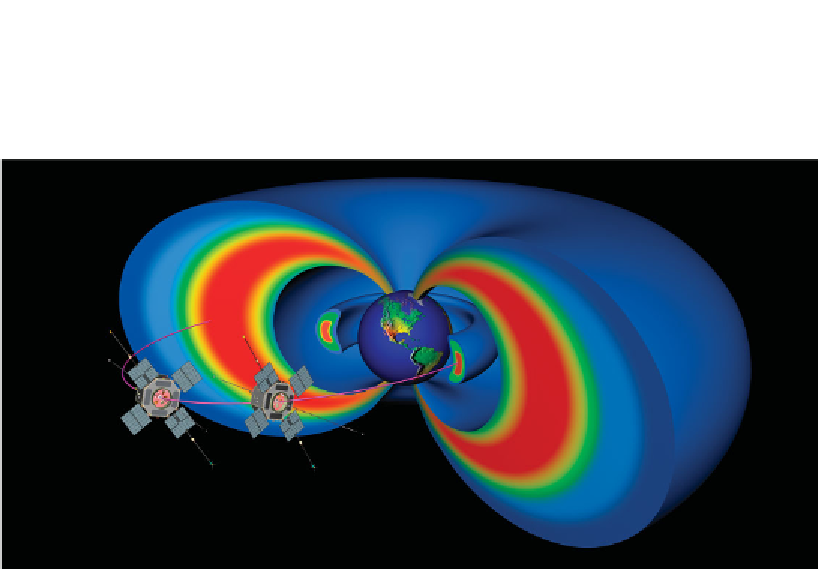Geoscience Reference
In-Depth Information
Figure 7.6
An artist's depiction of Earth's radiation belts. Particles in this region are very
energetic and pose a danger to astronauts and spacecraft. Observations from numerous
Antarctic locations help in understanding the dynamics of this region. The two satellites
pictured are the NASA Van Allen Probes mission (launched August 2012) that, together
with ground observations, are providing insight into the physical dynamics of the radiation
belts. (Credit: Johns Hopkins University Applied Physics Laboratory)
in the northern hemisphere into which magnetic
fields in the Antarctic can be
'
; limited largely by the ocean coverage in the north);
(7) large expanses of radio quiet areas.
Solar
mapped
'
(called
'
conjugacy
'
terrestrial research in the Antarctic has evolved substantially over the
50 years since the IGY, moving from studies conducted largely at, and reported
from, individual stations to the incorporation of measurements from multiple sites.
Even at the time of the IGY and thereafter, studies at a single site generally involved
instruments that measured different aspects of the solar
-
terrestrial environment.
For example, at the South Pole in the IGY measurements included those of the
aurora in optical wavelengths, of Earth
-
field components, of
the ionosphere and its layers, and of radio waves of various frequencies. Similar
measurements are made today at many Antarctic locations, using much more
sophisticated instrumentation. However, of more importance, these multiple
location measurements are often combined together at the data acquisition
stage and/or the analysis stage to provide essential information on spatial and
temporal variations in the space-related phenomena.
The offset of the south geomagnetic pole (just offshore from the Dumont
'
s three magnetic
D
'
Urville station) and the south geographic pole (at the Amundsen-Scott South Pole



Search WWH ::

Custom Search